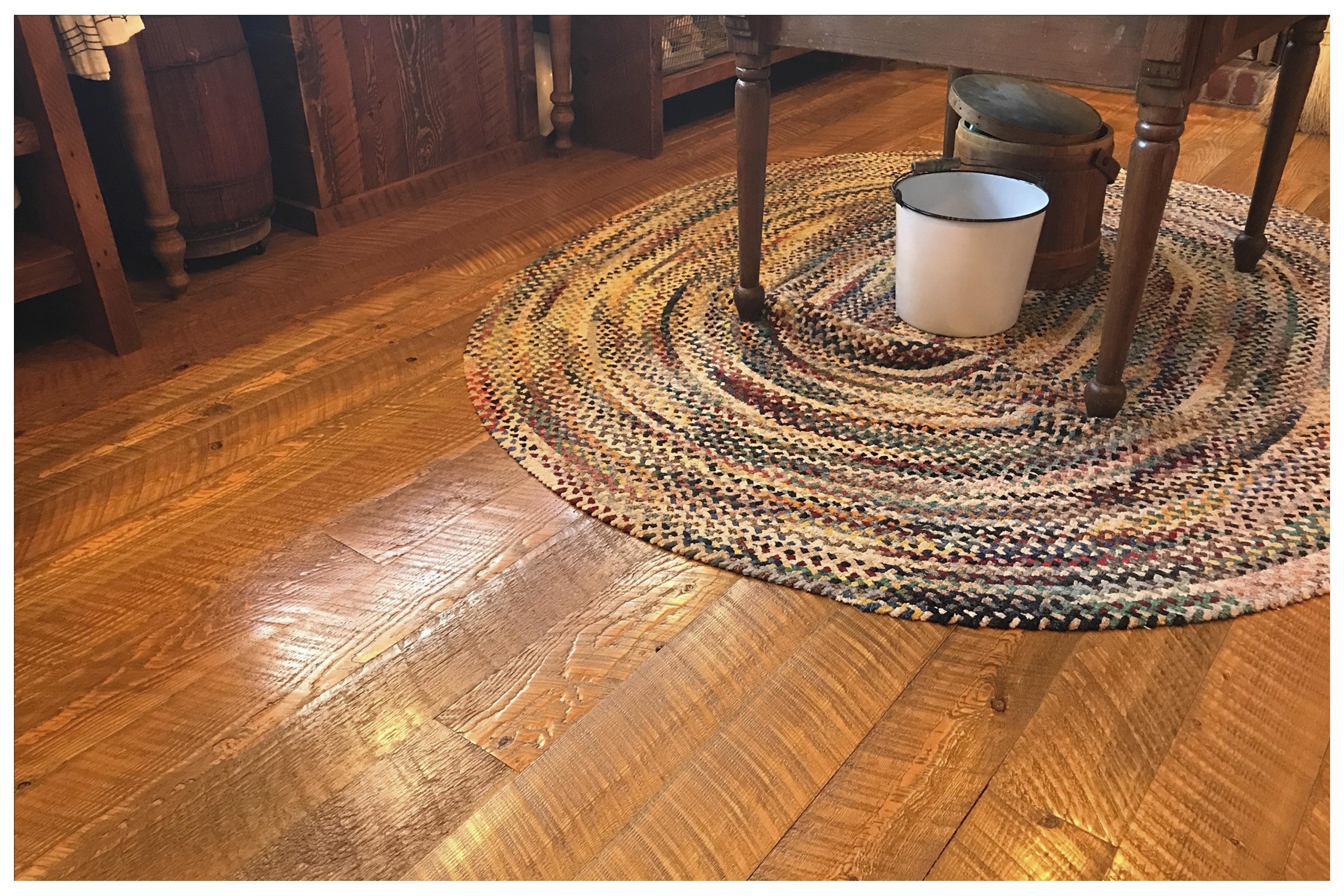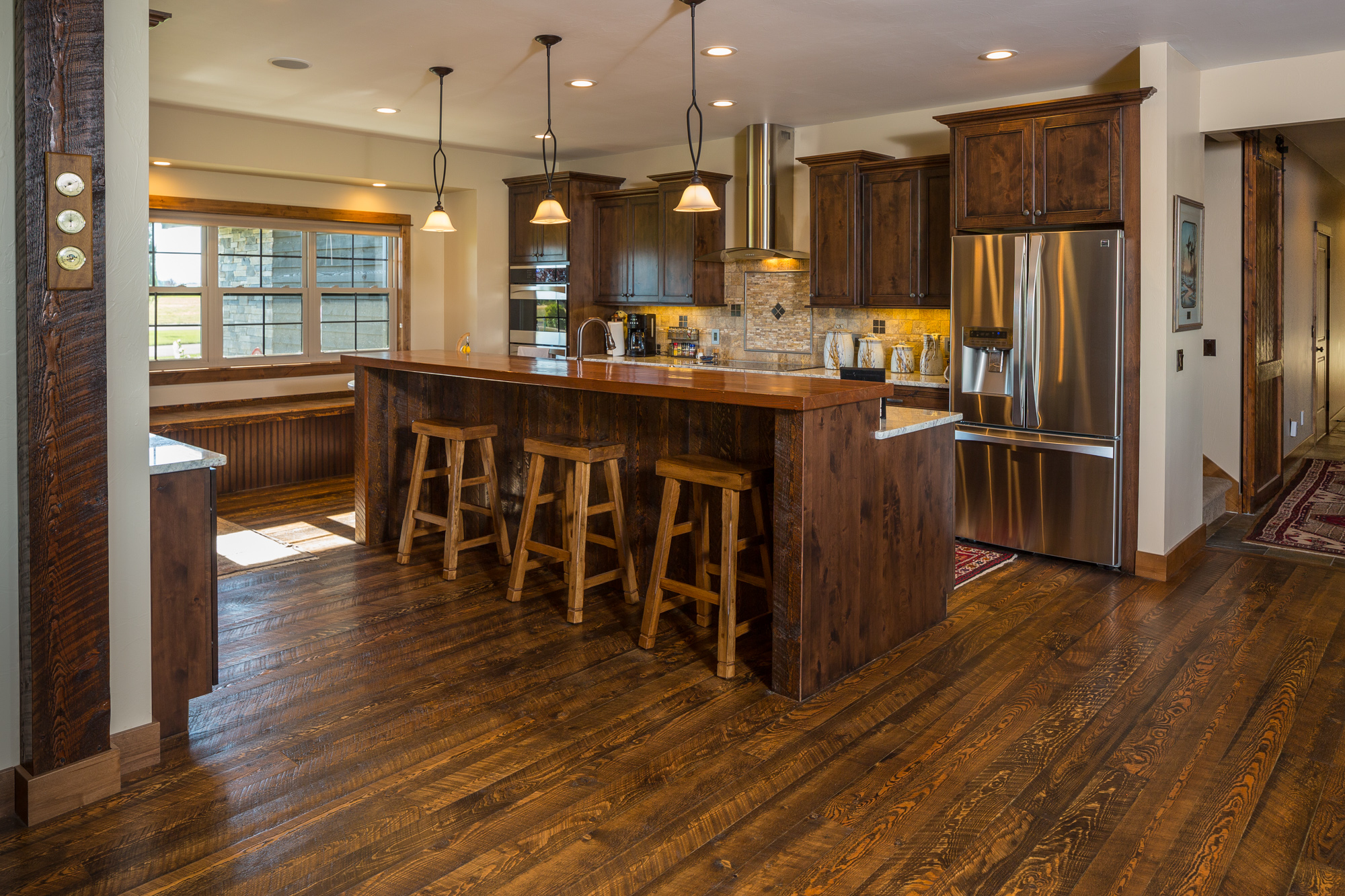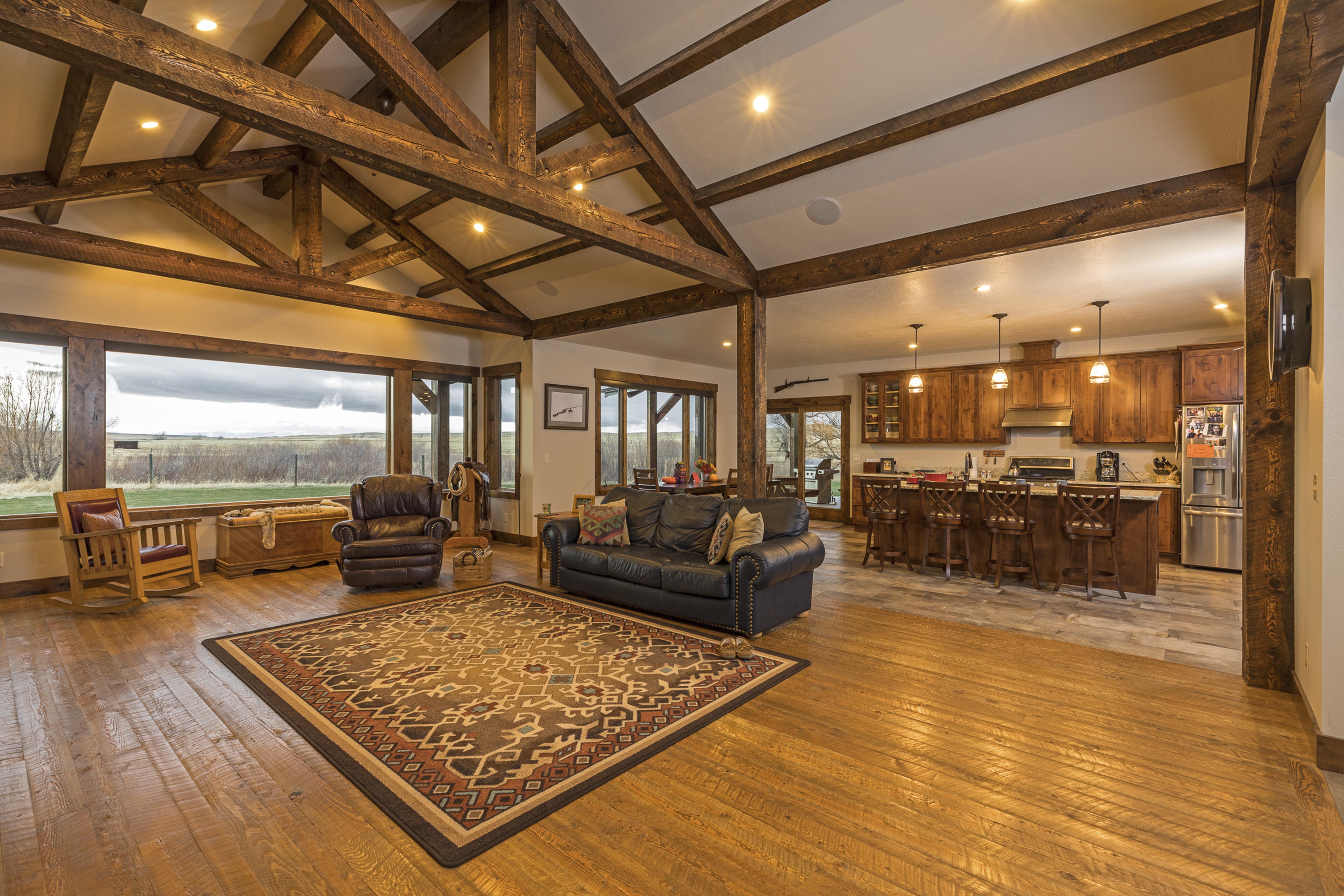One of the best parts of living in Montana is experiencing all the seasons – and yes, we include wintertime. However, as much as we may love the changes in weather, we definitely don’t want to feel those inside our homes.
If you’re building or looking to upgrade your heating system, you’ve likely found yourself wondering about radiant heat. At Marks Lumber, one of the most common questions we get about our circle sawn flooring is whether it can be installed with a radiant heat system. And while we would love to give you a simple yes or no answer, unfortunately, it is a little more complex than that. Here are a few things you may want to think about if you’re considering installing wood floors over a radiant heat system.

Can I Use Radiant Heat with Wood Floors?
Wood is a natural, living material that tends to move and shift with changes in temperatures and moisture levels. Because of this, the heat that radiant heating puts off can cause the boards to shrink, resulting in unsightly changes to your flooring. However, if you have your heart set on warm, cozy wood floors, it’s best to use your judgment and talk to the professionals about the best way to mix wood flooring and radiant heat. At Marks Lumber, we generally don't recommend using radiant heat with wood floors.
Types of Radiant Heat
There are two main types of radiant floor heating that people typically consider: electric and hydronic. Electric radiant is more costly and generally less efficient than hydronic and, therefore, is often confined to one or two rooms in a home.
Hydronic, or hot water radiant, is a much more cost-effective way to heat an entire home. Hot water heating is usually installed in grids on top of the concrete or subfloor; however, it can also be embedded into poured concrete if you’re building a new home.

Limiting Movement
As mentioned above, wood is a living, breathing material that will move and change throughout its lifecycle. This is one of the many things that makes wood so unique. However, it is also important to keep in mind when installing wood products. If you decide to use radiant heat and wood flooring, using a narrower plank may help lower the risk of excess movement. A narrow plank, such as a 4” width, is less likely to cup than something wider, like a 6" plank.

Professional Installation
While you may feel confident installing flooring in general, you might want to consider hiring a professional if you’re installing over a radiant heat system. Because wood flooring should be nailed down into a subfloor, you could risk damaging your new radiant heating system. With that in mind, hiring a professional is the best way to ensure safe installation and avoid any damage.
Radiant floor heat can be an excellent addition to any home. However, if you plan to mix wood flooring with radiant heat, it is best to call a professional and discuss the best option for you. While we don't generally recommend mixing radiant heat and wood flooring at Marks Lumber, you can always contact us with questions.
Sources: https://macwoods.com/radiant-h...; https://www.thisoldhouse.com/h...
